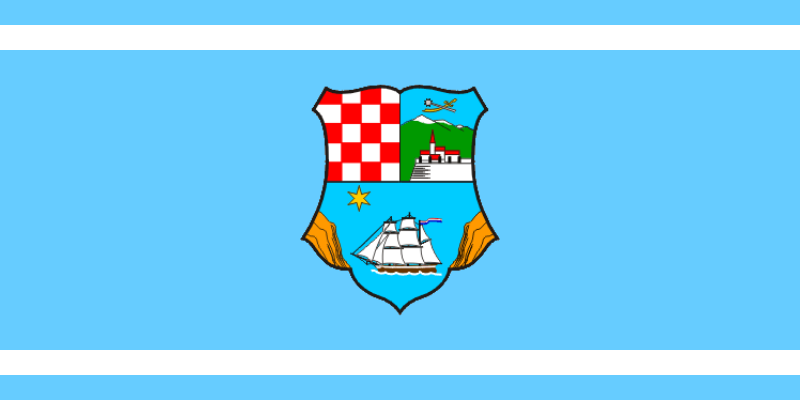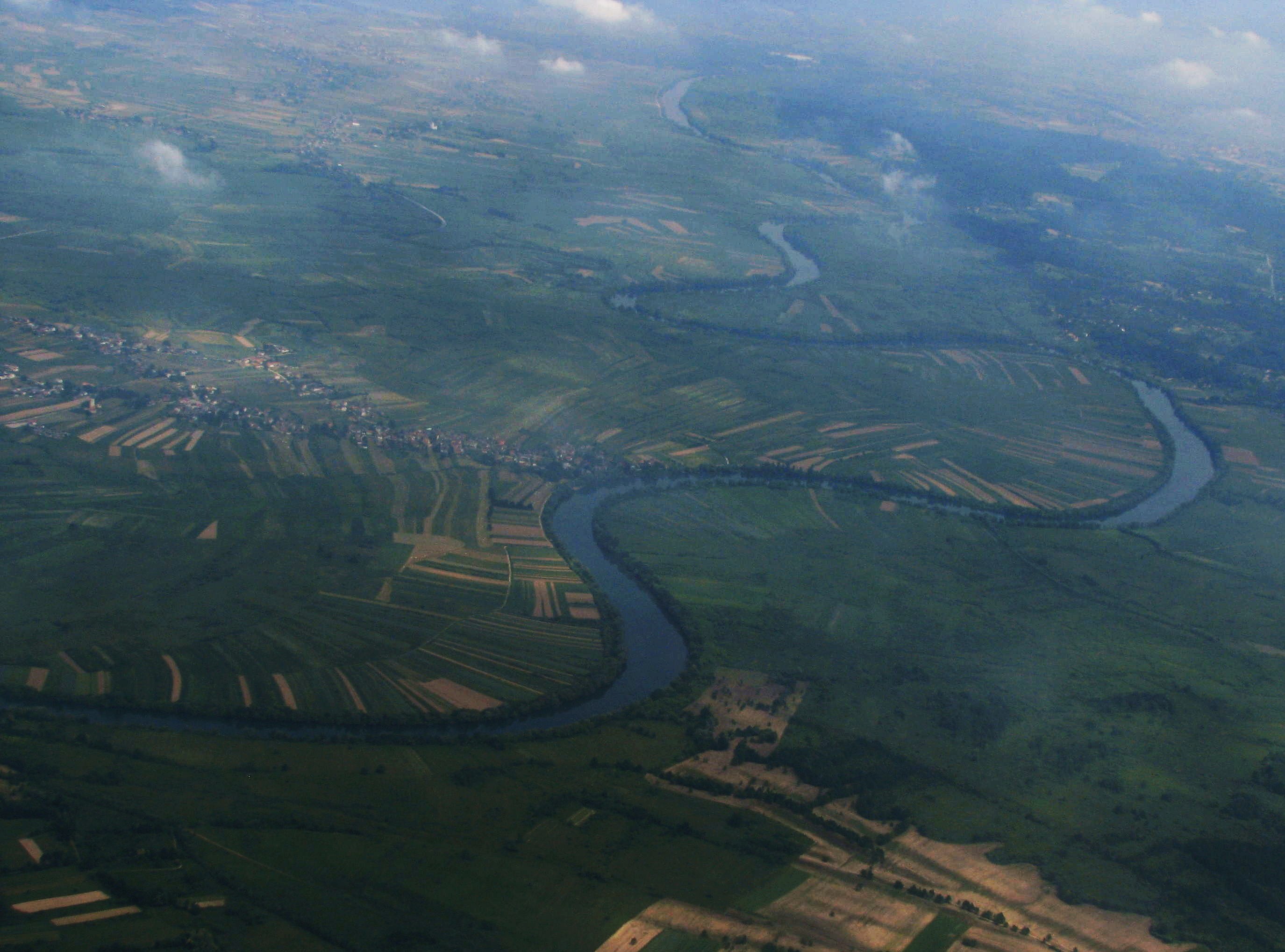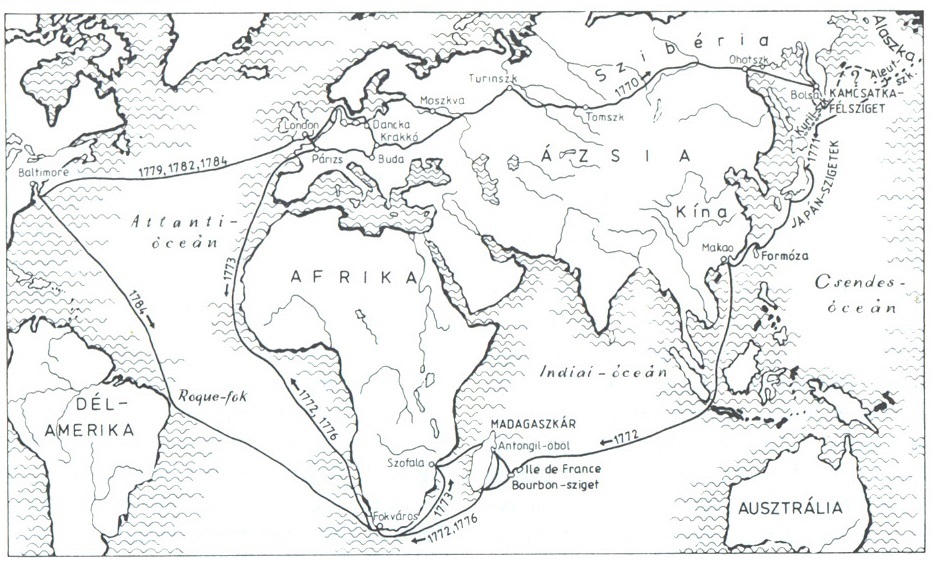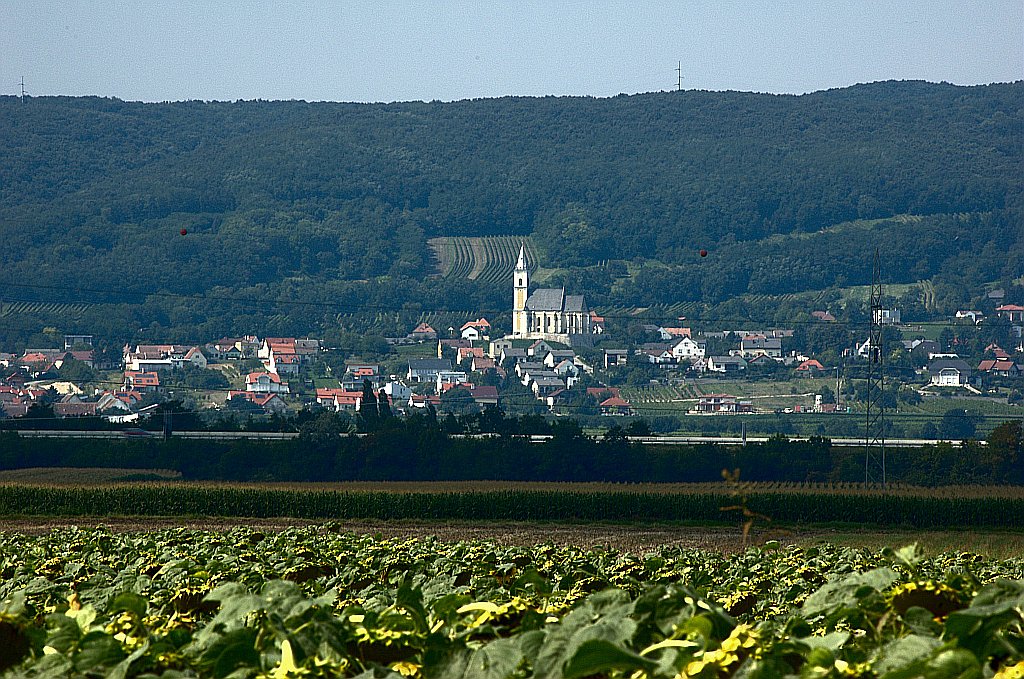|
Vrbovsko
Vrbovsko ( sr-Cyrl, Врбовско) is a town in western Croatia, situated at the far east of the mountainous region of Gorski Kotar in the Primorje-Gorski Kotar County; on its 280 square kilometers area, Vrbovsko features 60 settlements and a total of 3876 inhabitants. The town of Vrbovsko itself has a population of 1257. The Kamačnik canyon is its main source of tourism. Geography In the north, river Kupa separates Vrbovsko from adjoining Slovenia, while the eastern border follows the line of Zdihovo, Liplje and Bosiljevo settlements and cuts through the river Dobra valley near Ljubošina. The western border starts at the Kupa gorge at Radočaj, goes around Razdrto and passes over the railway tracks between Koritnik Veliki and Palež, continues to Lužac and ends in Sušica-Jablan area. The southern border is the highest in its relief characteristics – it runs along mountain peaks at an altitude of 1000 meters or higher. Debela Kosa (1169 m), Bukovica (1253 m), Bijela ... [...More Info...] [...Related Items...] OR: [Wikipedia] [Google] [Baidu] |
Fužine, Croatia
Fužine is a village and a municipality located in Primorje-Gorski Kotar County, 10 km away from the coast and 30 km away from the city of Rijeka. It is situated at 722 meters above sea level while being surrounded by mountains and three large artificial accumulation lakes (Bajer, Potkoš and Lepenica). Geography There are three large man-made lakes (Bajer and Lepenica) and one small lake (Potkoš) in Fužine. All the lakes are used for generating electricity. There is also a cave in Fužine named Vrelo. The area is surrounded by the mountains of Tuhobić, Viševica, and Bitoraj. Climate Between 1955 and 1972, the highest temperature recorded at the Brana weather station was , on 6 July 1957. The coldest temperature was , on 14 January 1968. History Fužine was built in the 17th century when the House of Zrinski opened an iron mine in this area of Gorski Kotar. Fužine got its name from blacksmiths, because there were many blacksmiths in Fužine fixing carriages. Sign ... [...More Info...] [...Related Items...] OR: [Wikipedia] [Google] [Baidu] |
Kamačnik
Kamačnik is a right tributary of the Dobra that runs through a canyon covered in dense beech forest. Kamačnik canyon gained legal protection in 2002 by decision of the Županijska skupština of Primorje-Gorski Kotar County, which can be found in the ''Službene novine Primorsko-goranske županije'' issue 23/2002. The tourist path along the Kamačnik river was made in the second half of the 20th century, commissioned by the Tourist Society (). The path winds back and forth from one bank to the other over a series of wooden bridges all the way to the source at a Vauclusian spring. At the beginning of the 20th century, a sawmill was built near the mouth of the canyon, but it was in ruins by the time the park was declared in 2002. The freezing rain of February 2014 left the path blocked, but it was cleared by the traditional opening of the tourist season on 1 May in Kamačnik, and later in the year the construction of pavilions with tables for eating at the entrance. On 11 July, ... [...More Info...] [...Related Items...] OR: [Wikipedia] [Google] [Baidu] |
Gorski Kotar
Gorski Kotar () is the mountainous region in Croatia between Karlovac and Rijeka. Because 63% of its surface is forested it is popularly called ''the green lungs of Croatia'' or ''Croatian Switzerland''. The European route E65, which connects Budapest and Zagreb with the Adriatic Port of Rijeka, passes through the region. Geography The region is divided between Primorje-Gorski Kotar County and Karlovac County. The majority of the region lies in Primorje-Gorski Kotar County including the cities of Delnice, Čabar, Vrbovsko; and the municipalities of Mrkopalj, Ravna Gora, Skrad, Brod na Kupi, Fužine and Lokve. The part of the region that is in Karlovac County contains the municipality of Bosiljevo and part of the city of Ogulin. With a population of 4454, Delnice is the largest city of the region and its center. Other centers with populations of more than 1,000 are Vrbovsko (1,900) and Ravna Gora (1,900). Begovo Razdolje, the highest town in Croatia, is located in Gor ... [...More Info...] [...Related Items...] OR: [Wikipedia] [Google] [Baidu] |
Dobra (Kupa)
The Dobra () is a river located mostly in the Karlovac County in the Republic of Croatia. It is long and its basin covers an area of . Its name is the feminine form of the Croatian adjective meaning "good" but it is over simplistic folk etymology. The river name probably comes from the Celtic , meaning 'water', Illyrian δυβρις () 'deep' or Old Slavonic dъbrь (, ) also 'deep' or 'valley'. Dobra rises in Gorski Kotar near Skrad and Ravna Gora, where it flows first to the north and then turns to the east. It flows past Vrbovsko, to the southeast into the city of Ogulin, where it becomes an underground stream. It takes a sharp northward turn and rises back to the surface north of Ogulin. It continues to the northeast, past the Lešće spa and a hydroelectric plant (built and in test operation ), running in parallel to the Kupa and Mrežnica, and finally flows into the Kupa north of Karlovac. The Dobra river is rich in fish and birds. The Upper and Lower Dobra river ar ... [...More Info...] [...Related Items...] OR: [Wikipedia] [Google] [Baidu] |
List Of Cities And Towns In Croatia
An urbanized area in Croatia can gain the status of ''grad'' (which can be translated as town or city as there is no distinction between the two terms in Croatian language, Croatian) if it meets one of the following requirements: # is the center of a Counties of Croatia, county (''županija''), or # has more than 10,000 residents, or # is defined by an exception (where the necessary historical, economic or geographic reasons exist) A city (town) represents an urban, historical, natural, economic and social whole. The suburbs comprising an economic and social whole with the city, connected with it by daily migration movements and daily needs of the population of local significance, may also be included into the composition of a city as unit of local self-government. ''Grad'' (city/town) is the local administrative equivalent of ''Municipalities of Croatia, općina'' (translated as "Municipalities of Croatia, municipality"), with the only distinction being that the former usually ... [...More Info...] [...Related Items...] OR: [Wikipedia] [Google] [Baidu] |
Brod Na Kupi
Brod na Kupi () is a village located 12 km north of Delnice, in the western part of Gorski Kotar in Croatia. A bridge connects it with Petrina in Slovenia. Its population is 207 (2011 census). History Brod na Kupi was first mentioned on 22 February 1481 in a document freeing the citizens of Grič from tariffs in Brod and elsewhere. On 4 June 1657, as part of a delimitation between the possessions of the Zrinski family in Brod and those of the Frankapan family in Severin, a document was drawn up before a committee in Moravičke Drage consisting of baron Planker ''oberhautmann'' of Karlovac on behalf of Juraj IV Frankapan and Juraj Sili ''kapetan dvoranski'' and ''vicekapetan'' of Žumberak and Boltizar Babonosić prefect of Ozalj on behalf of Petar Zrinski. Those who gave testimony about the boundary were Martin Goljak (80), Matija Šnepergar (80), Mihajlo Šepec (80), Petar Butina (85), Petar Abramović (85), Lovro Crnković (85), Juraj Šnepergar (88), Juraj Podna ... [...More Info...] [...Related Items...] OR: [Wikipedia] [Google] [Baidu] |
Primorje-Gorski Kotar County
Primorje – Gorski Kotar County (, ) is a Counties of Croatia, county in western Croatia, most of it based in the historical and cultural region called Croatia proper and some of it in Istria, including the Bay of Kvarner, the surrounding Northern Croatian Littoral, and the mountainous region of Gorski Kotar. Its center is Rijeka. The county's population was 296,195 at the 2011 census. The county includes the island territories of Krk (island), Krk, Cres (island), Cres, Lošinj and Rab (island), Rab. It borders Slovenia. The county is divided: * City of Rijeka (county seat) * Town of Bakar, Croatia, Bakar * Town of Cres (town), Cres * Town of Crikvenica * Town of Čabar * Town of Delnice * Town of Kastav * Town of Kraljevica * Town of Krk (town), Krk * Town of Mali Lošinj * Town of Novi Vinodolski * Town of Opatija * Town of Rab (town), Rab * Town of Vrbovsko * Municipality of Baška, Croatia, Baška * Municipality of Brod Moravice * Municipality of Čavle * Municipality of D ... [...More Info...] [...Related Items...] OR: [Wikipedia] [Google] [Baidu] |
Kupa
The Kupa () or Kolpa ( or ; from in Roman Empire, Roman times; ) river, a right tributary of the Sava, forms a natural border between north-west Croatia and southeast Slovenia. It is long, with a length of serving as the border between Croatia and Slovenia and the rest located in Croatia. Etymology The name ''Colapis'', recorded in Classical antiquity, antiquity, is presumed to have come from the Proto-Indo-European language, Proto-Indo-European roots ''*quel-'' 'turn, meander' and ''*ap-'' 'water', meaning 'meandering water'. An alternative interpretation is ''*(s)kel-''/''*skul-'' 'shiny, bright', meaning 'clear river'. Course The Kupa originates in Croatia in the mountainous region of Gorski Kotar, northeast of Rijeka, in the area of Risnjak National Park. It flows a few kilometers eastwards, receives the small Čabranka River from the left, before reaching the Slovenian border. It then continues eastwards between the White Carniola region in the north and Central Croat ... [...More Info...] [...Related Items...] OR: [Wikipedia] [Google] [Baidu] |
Maurice Benyovszky
Count Maurice Benyovszky de Benyó et Urbanó (; ; ; 20 September 1746 – 24 May 1786) was a military officer, adventurer, and writer from the Kingdom of Hungary, who described himself as both a Hungarian and a Pole. He is considered a national hero in Hungary, Poland, and Slovakia. Benyovszky was born and raised in Verbó, Kingdom of Hungary (present-day Vrbové, Slovakia). In 1769, while fighting for the Polish armies under the Bar Confederation, he was captured by the Russians and exiled to Kamchatka Peninsula, Kamchatka. He subsequently escaped and returned to Europe via Macau and Mauritius, arriving in France. In 1773, Benyovszky reached agreement with the French government to establish a trading post on Madagascar. Facing significant problems with the climate, the terrain, and the native Sakalava people, he abandoned the trading post in 1776. Benyovszky then returned to Europe, joined the Austrian Army and fought in the War of the Bavarian Succession. After a failed ventu ... [...More Info...] [...Related Items...] OR: [Wikipedia] [Google] [Baidu] |
Royal Free City
A royal free city, or free royal city (Latin: ''libera regia civitas''), was the official term for the most important cities in the Kingdom of Hungary from the late 12th centuryBácskai Vera – Nagy Lajos: Piackörzetek, piacközpontok és városok Magyarországon 1828-ban. Budapest, 1984. to the Hungarian Revolution of 1848. The cities were granted certain privileges by the King of Hungary to prevent their control by the Hungarian nobility, hence "royal", and exercised some self-government in relation to their internal affairs and so were "free". From the late 14th century, the elected envoys of the royal free cities participated in the sessions of the Diet of Hungary, Hungarian Diet and so they became part of the legislature. This list also includes cities in the Kingdom of Croatia (other), Kingdom of Croatia and the Banate of Bosnia, which were part of the Lands of the Hungarian Crown. The term "royal free city" in the kingdom's languages is as follows: * * * * * * * ... [...More Info...] [...Related Items...] OR: [Wikipedia] [Google] [Baidu] |
Magistrate
The term magistrate is used in a variety of systems of governments and laws to refer to a civilian officer who administers the law. In ancient Rome, a '' magistratus'' was one of the highest ranking government officers, and possessed both judicial and executive powers. In other parts of the world, such as China, magistrate is a word applied to a person responsible for administration over a particular geographic area. Today, in some jurisdictions, a magistrate is a judicial officer who hears cases in a lower court, and typically deals with more minor or preliminary matters. In other jurisdictions (e.g., England and Wales), magistrates are typically trained volunteers appointed to deal with criminal and civil matters in their local areas. Original meaning In ancient Rome, the word '' magistratus'' referred to one of the highest offices of state. Analogous offices in the local authorities, such as '' municipium'', were subordinate only to the legislature of which they generally ... [...More Info...] [...Related Items...] OR: [Wikipedia] [Google] [Baidu] |
Military Frontier
The Military Frontier (; sh-Cyrl-Latn, Војна крајина, Vojna krajina, sh-Cyrl-Latn, Војна граница, Vojna granica, label=none; ; ) was a borderland of the Habsburg monarchy and later the Austrian and Austro-Hungarian Empire. It acted as the '' cordon sanitaire'' against incursions from the Ottoman Empire. The establishment of the new defense system in Hungary and Croatia took place in the 16th century, following the election of Ferdinand I as king. Six districts under special military administration were established in Hungary and Croatia. The Croatian Military Frontier and the Slavonian Military Frontier came under the jurisdiction of the Croatian Sabor and ban. In 1627, they were placed under the direct control of the Habsburg military. For more than two centuries, they would retain complete civilian and military authority over the area, up to the abolition of the Military Frontier in 1881. During the 17th century, the territory was expande ... [...More Info...] [...Related Items...] OR: [Wikipedia] [Google] [Baidu] |





